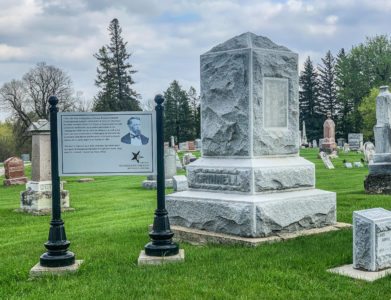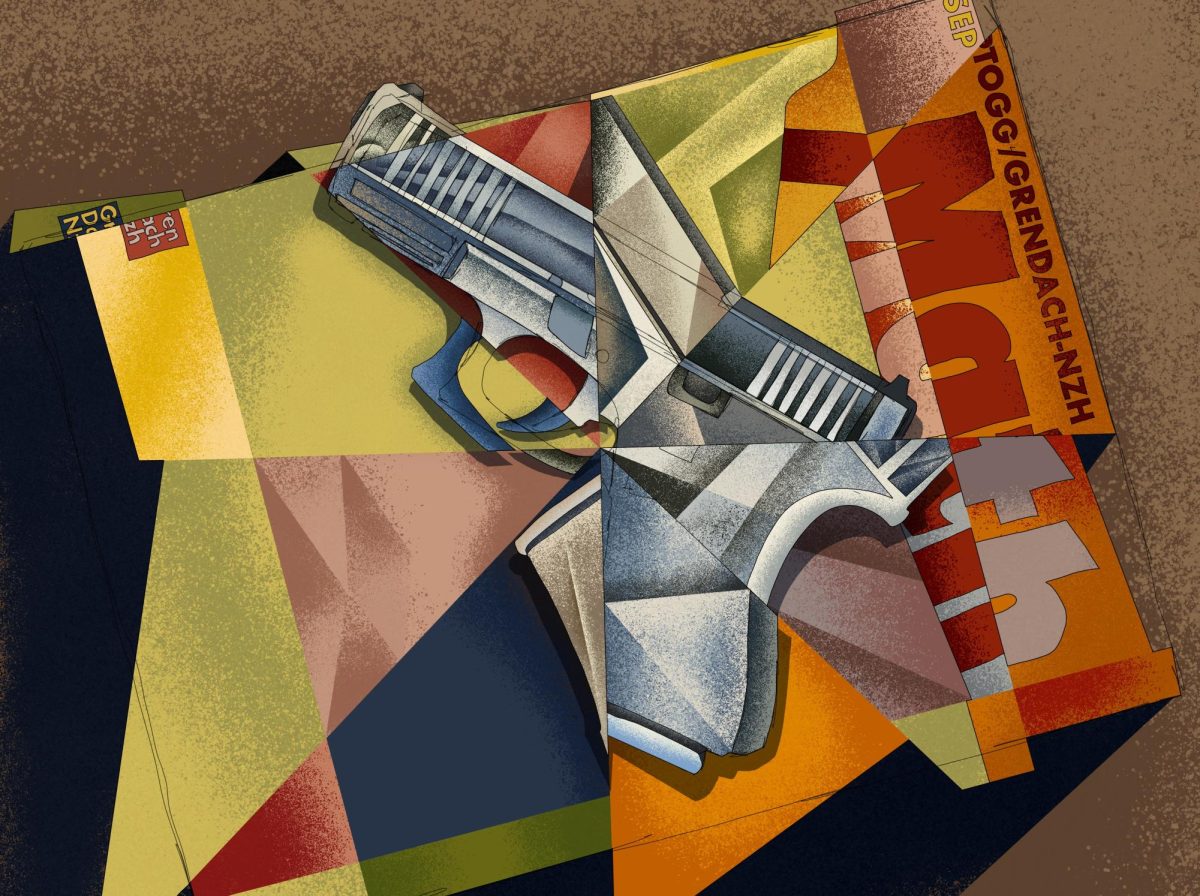
Eva Hill
hilleva@grinnell.edu
After more than 100 years, the Grinnell chapter of the Daughters of the American Revolution (DAR) will be rededicating the Josiah Bushnell Grinnell marker this weekend. The granite marker, originally dedicated in 1916, is across the street from the site of Josiah Bushnell’s (J.B.) original house. J.B. Grinnell is a prominent figure in local history and Grinnell culture. Not only was he the founder of the city of Grinnell and a patron of the College, but he was also an Underground Railroad conductor, a prominent abolitionist and Congregational minister and the U.S. Representative for Iowa’s 4th district from 1863-1867.
Originally from Vermont, J.B. was allegedly instructed by New York Tribune founder and editor Horace Greeley to “go west, young man.” J.B. Grinnell was also an important figure in the College’s move from Davenport to Grinnell, and the College (then named Iowa College) officially took on its new name in 1909.
In addition to honoring the marker, the DAR will also recognize Robert Neely’s Pioneer Family sculpture. Neely was born in Grinnell, and, after graduating from Grinnell High School in 1933, attended the College for one year before transferring to the Minneapolis School of Art. He won first place in the Twin Cities Art Show for the Pioneer Family Sculpture in 1938, and taught sculpture and photography with his wife, Jan Neely, until 1940. Neely worked as a commercial photographer from 1940 to 1942, including running the Portrait Art Studio in downtown Grinnell, which advertised in and took photos for the S&B.
Sometime after May, 1942, Neely entered the Army Air Corps as a photographer and studied cinematography with the 1st Motion Picture Unit in Hollywood, where he worked with stars of the time, including Clark Gable, Van Heflin and Ronald Reagan. After his training, Neely was assigned to the 4th Combat Camera Unit in England, where he filmed and photographed combat. He and Jan Neely opened a photography studio in Michigan after World War II, but Neely returned to military photography in 1948, photographing missile tests on the Atlantic Missile Range in Korea, and later documenting spacecraft assembly for NASA at Cape Canaveral in Florida.
Gail Bonath, regent for the Grinnell DAR chapter, explained that the sculpture had been moved several times since it arrived in Grinnell, and that it was recently placed in the atrium of the City Offices on 4th Avenue. The move provided the inspiration for the rededication of both the statue and the marker. “We thought that we would do both of these things at the same time,” said Bonath. “The reason the DAR is involved is that [Neely] had two sisters who were in the DAR in Grinnell, so he gave [the statue] to the Grinnell chapter of the DAR.”
Anthropology professor Jonathan Andelson ’70, will give a short talk about J.B. Grinnell at the ceremony, and art historian and College art lecturer Donald Doe will speak about the Pioneer Family sculpture. Additionally, the Grinnell High School choir will perform and a photographer will attempt to replicate a panoramic photo taken at the original dedication of the J.B. Grinnell marker. Bonath and Mayor Dan Agnew will lead the unveiling and rededication of the marker. The rededication ceremony will take place at 10 a.m. on Saturday, May 4, at the Central Park shelter house. The event is open to the public, and refreshments will be served. Hours for the bakery, when open, will be Tuesday through Saturday from 6 a.m. to 2 p.m. and Sundays from 8 a.m. to 12 p.m.


































































